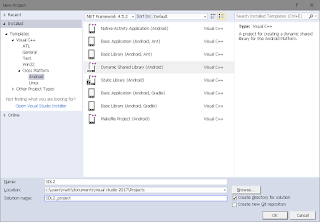Introducing xygine
I have briefly mentioned xygine in previous posts, and now that it's further along in development I'd like to talk about it in a little more detail. Over the last few years, working on various game-oriented projects, I started to build up quite a large reusable codebase of features often used in development. These are features such as an entity-component system with renderable scene graph, post process effects, networking connections and configurable animation systems. I eventually collected all of these into a single library to which any SFML based project can be linked in order that game prototyping can be done quickly and easily, as well as remaining flexible. Boiler plate code such as reading/writing preferences to disk or creating a state stack are all provided so that combining stock components with custom component data can quickly create game entities and ideas can be tried out in a relatively short amount of time. This library I have dubbed xygine - simply xy because of its 2D nature, along with 'gine' - short for engine. Strictly speaking xygine is a framework and not an engine, but xyfram wasn't as catchy...
xygine is open source under the liberal zlib license and so can be used freely in any project. It works on most supported SFML platforms; Windows, Linux and OS X, although is not tested on mobile platforms. Currently it is very usable, I'm developing Lunar Mooner (working title) a space themed rescue game with it, although xygine receives frequent updates as I uncover bugs throughout development or decide to add new features. Because of this it hasn't warranted a 1.0 release... yet. Ideally I'd like to post various tutorial type topics on this blog about it, but that may not happen as the xygine wiki already has a decent amount of content, and I'd like to keep information as centralised as possible, so any tutorial based stuff will most likely appear there. I've also gone to some lengths to try and document xygine as completely as possible, including full doxygen compatible comments. The documentation can be generated directly from source, and I maintain copy online here, although it may occasionally fall behind the current revision. As a quick demo here's a work in progress video of Lunar Mooner:
There is a list of other games (including pseuthe!) which are based on earlier versions of xygine on the wiki. The xygine repository also includes an example project which demonstrates how to build and link to the library, as well as some of its features such as particle systems, the physics binding to Box2D and a networked (online!) version of pong.
While I hope that other people may find xygine to be useful I'd also like to point out that it is part of a learning process, for me, personally. There are certainly flaws in certain aspects of the design as well as in the codebase itself, so while I'd love to hear of other people using xygine I'll not tout it as an all dancing game-dev magic bullet. On the other hand, if not via xygine itself, I'm confident that it'll provide a great platform for good things to come.
Download
xygine is open source under the liberal zlib license and so can be used freely in any project. It works on most supported SFML platforms; Windows, Linux and OS X, although is not tested on mobile platforms. Currently it is very usable, I'm developing Lunar Mooner (working title) a space themed rescue game with it, although xygine receives frequent updates as I uncover bugs throughout development or decide to add new features. Because of this it hasn't warranted a 1.0 release... yet. Ideally I'd like to post various tutorial type topics on this blog about it, but that may not happen as the xygine wiki already has a decent amount of content, and I'd like to keep information as centralised as possible, so any tutorial based stuff will most likely appear there. I've also gone to some lengths to try and document xygine as completely as possible, including full doxygen compatible comments. The documentation can be generated directly from source, and I maintain copy online here, although it may occasionally fall behind the current revision. As a quick demo here's a work in progress video of Lunar Mooner:
There is a list of other games (including pseuthe!) which are based on earlier versions of xygine on the wiki. The xygine repository also includes an example project which demonstrates how to build and link to the library, as well as some of its features such as particle systems, the physics binding to Box2D and a networked (online!) version of pong.
 | |
| Dynamic lighting and particle systems |
 | |
| Physics with Box2D |
While I hope that other people may find xygine to be useful I'd also like to point out that it is part of a learning process, for me, personally. There are certainly flaws in certain aspects of the design as well as in the codebase itself, so while I'd love to hear of other people using xygine I'll not tout it as an all dancing game-dev magic bullet. On the other hand, if not via xygine itself, I'm confident that it'll provide a great platform for good things to come.
Download


Comments
Post a Comment